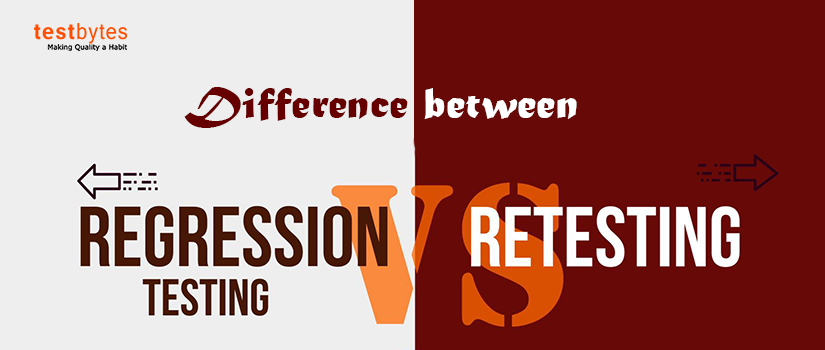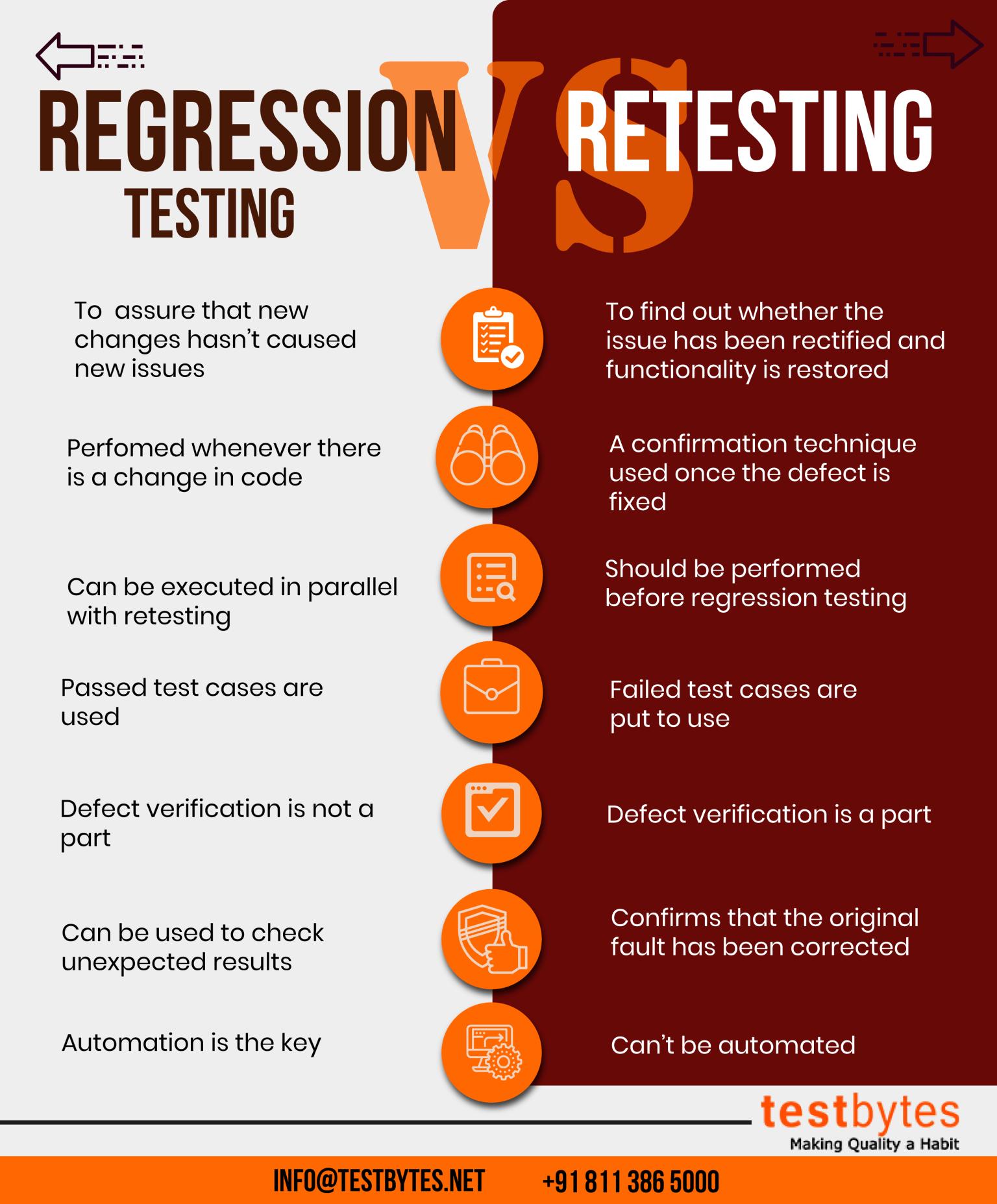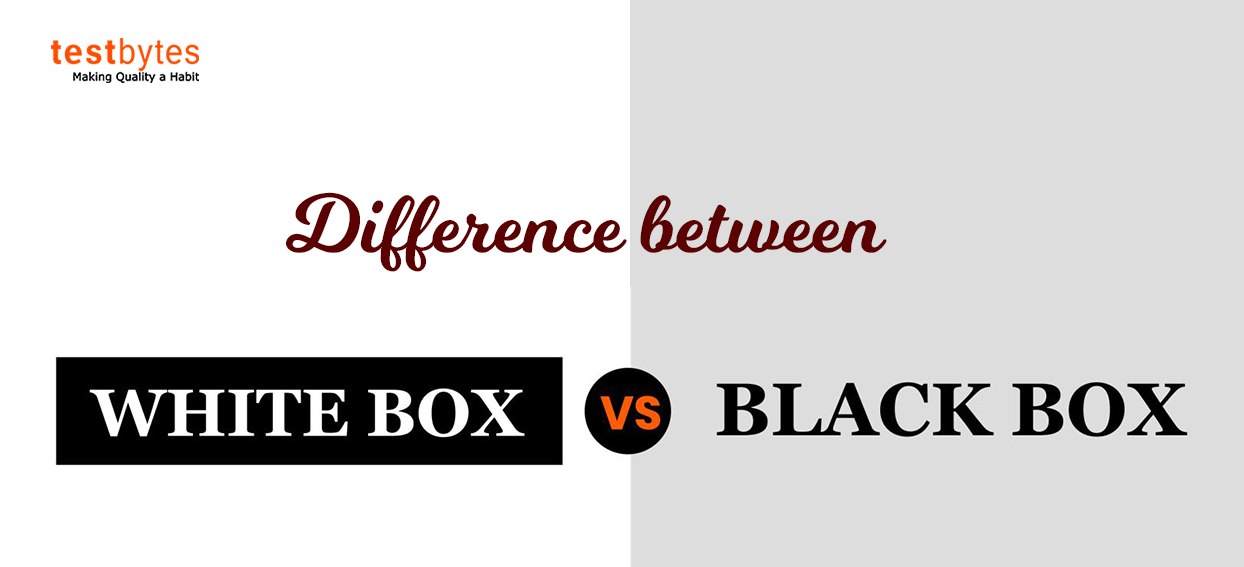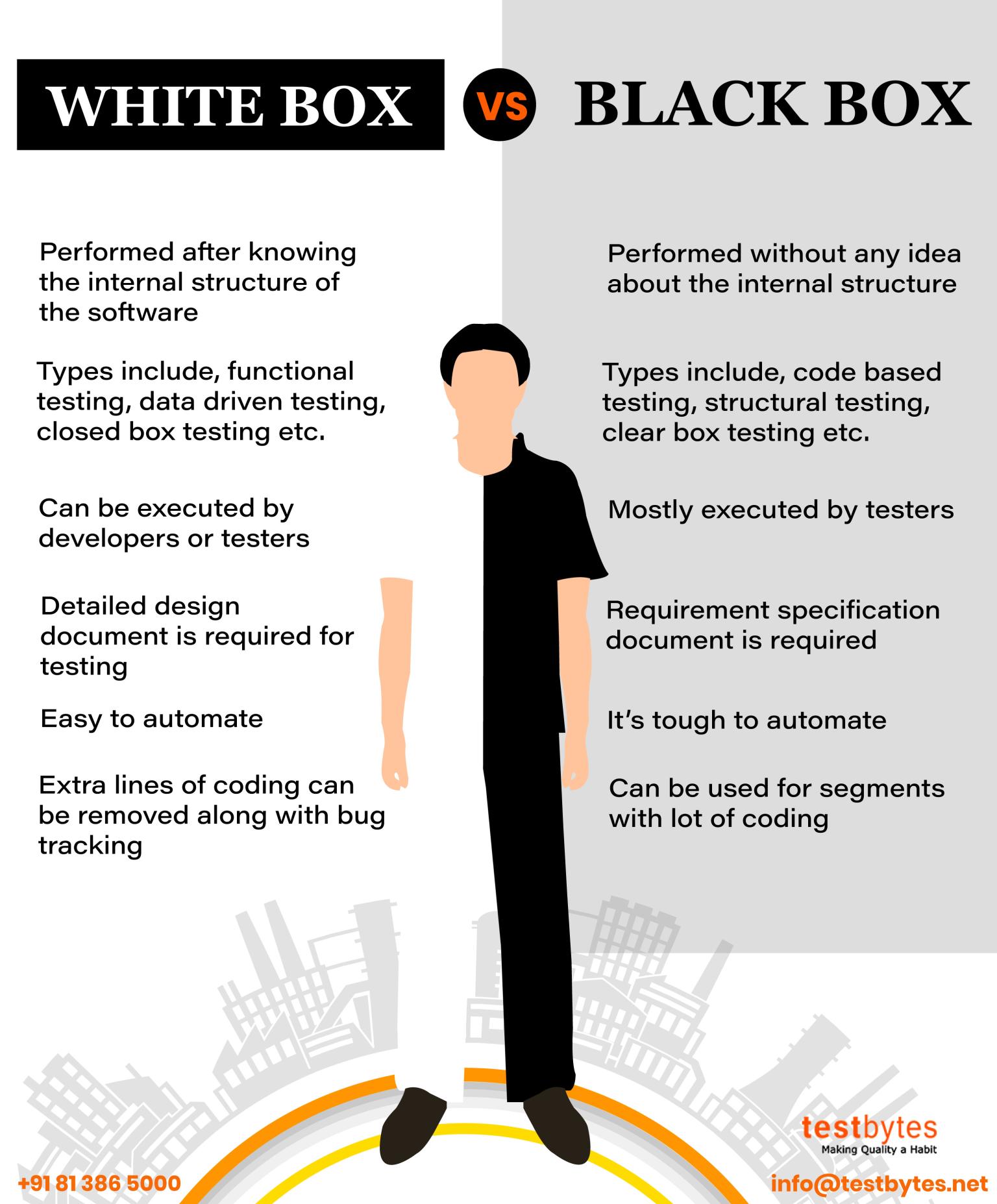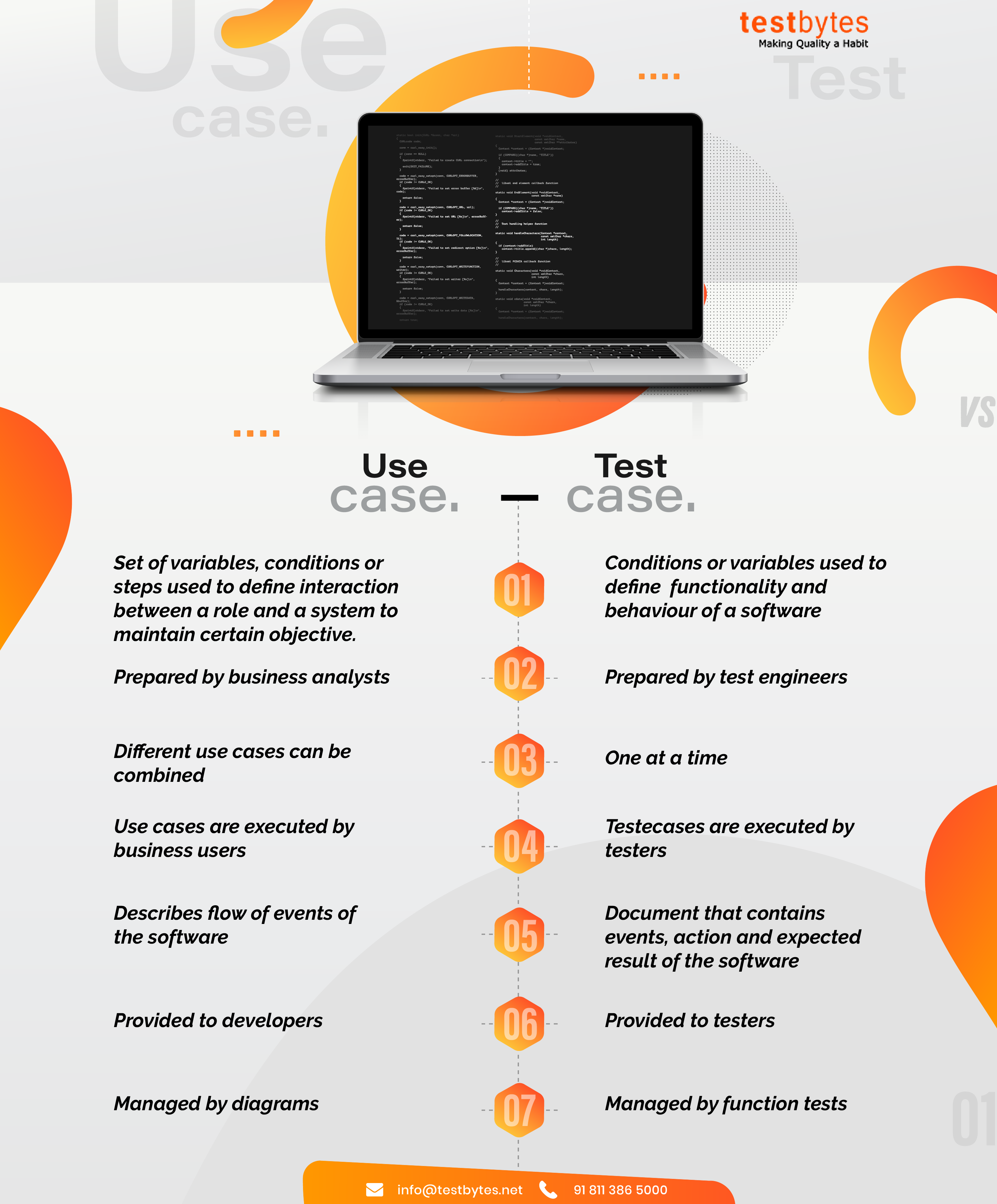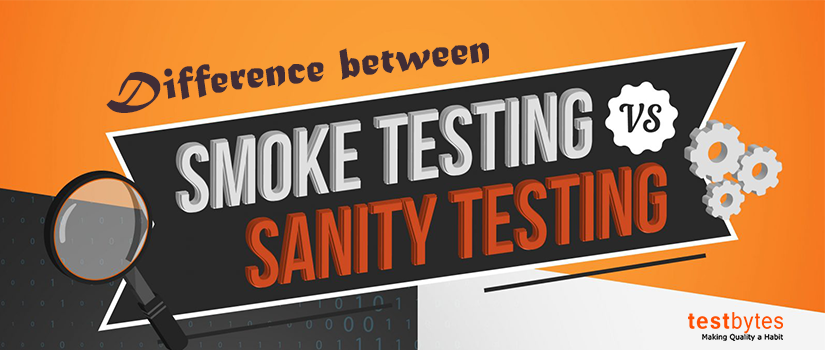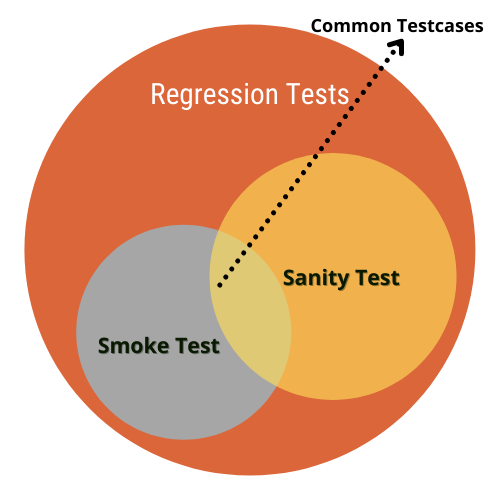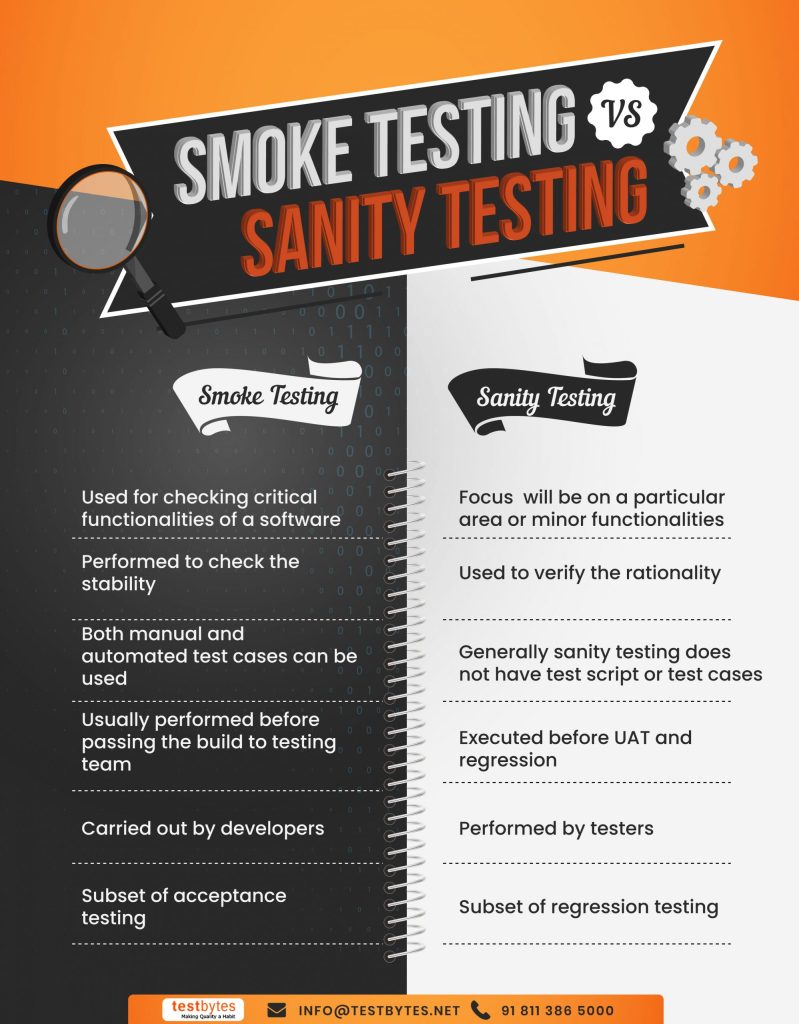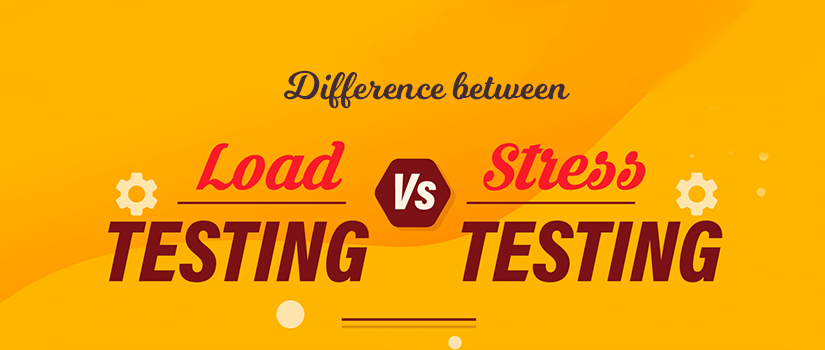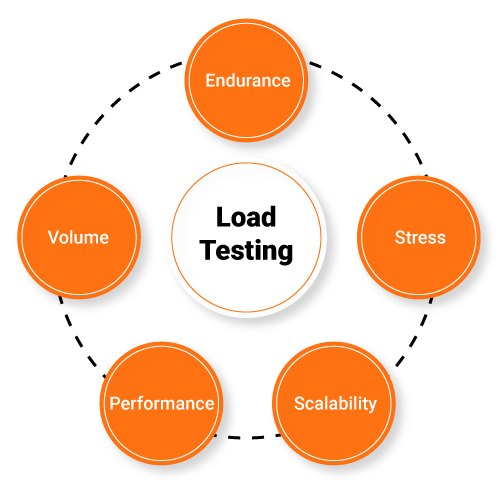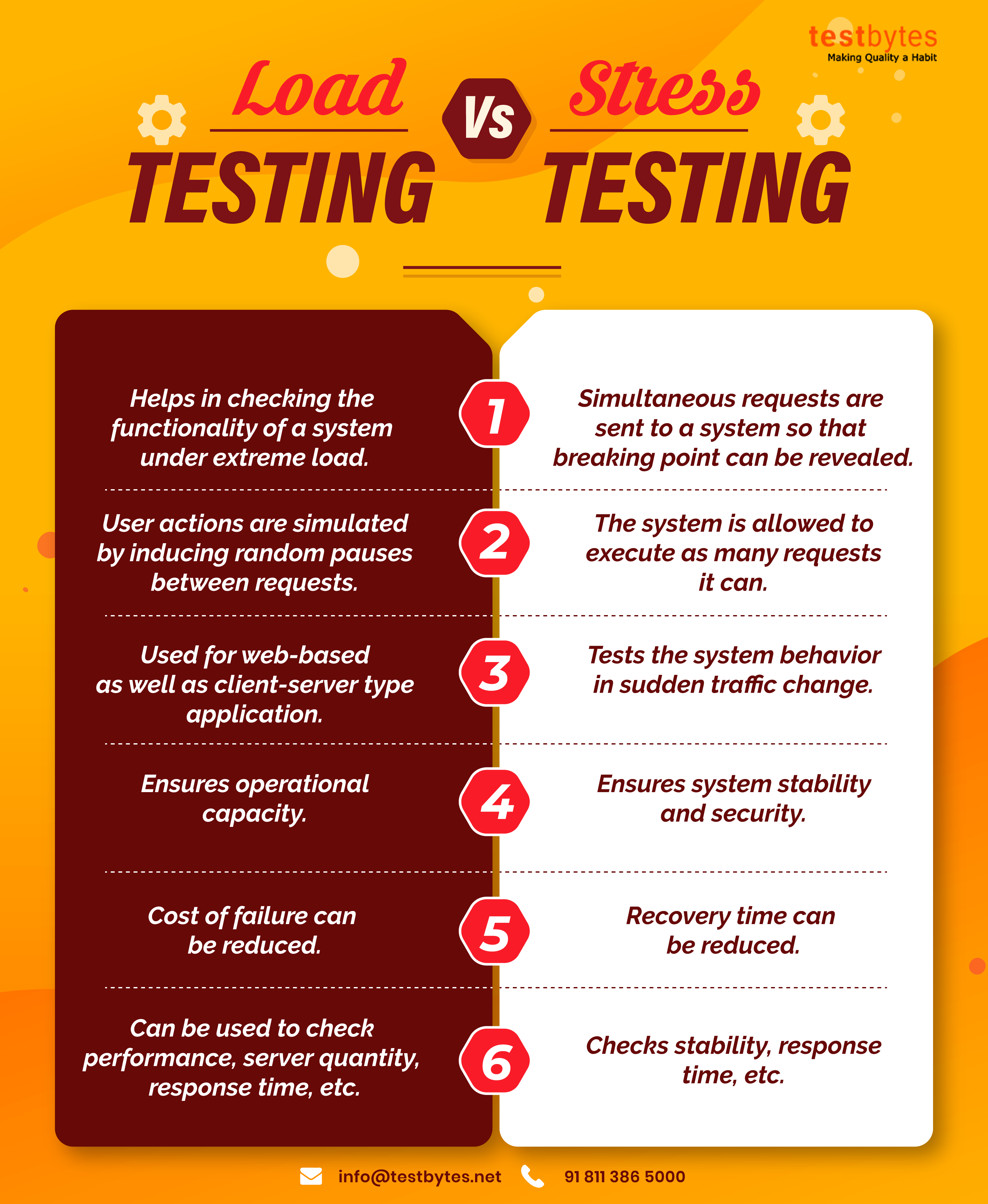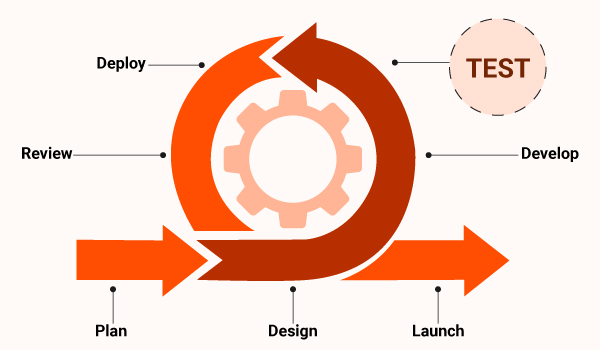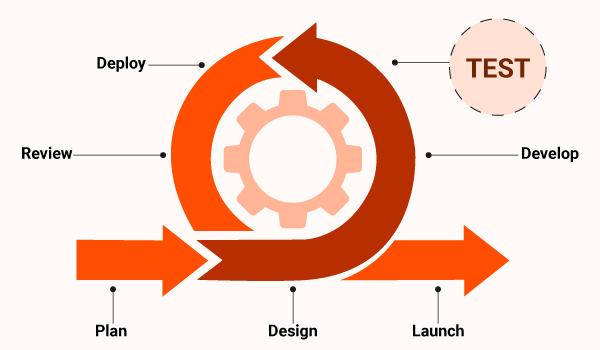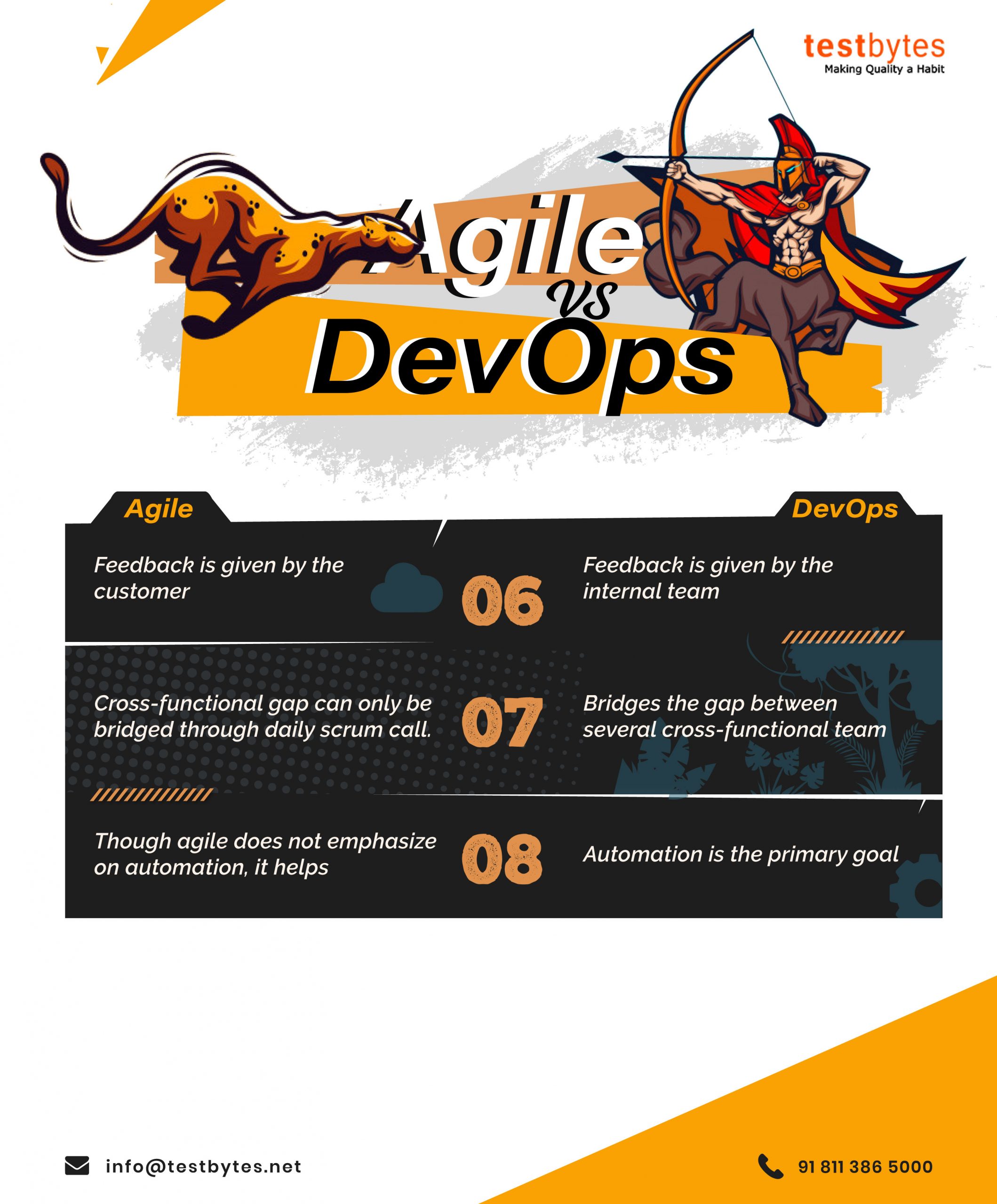Which are the prominent software testing companies in the USA?
Before any company puts up software they certainly check that is it working and will be brought to use as per the requirements of the company.
if you think that finding the best one from the USA is like the same story of the needle in a haystack, you have reached the right place. Here is the list of best software companies which are there in the USA which are known for providing QA/testing services.
Top software testing companies in USA (Quick Access Table)
| Company Name | Founding year | Location | Employee Strength | Core Services |
| TestBytes | 2013 | New York NY | 51 – 200 | Mobile App Testing, Game Testing, Test Management Services, Automation Testing, Security Testing, Web Application Testing, Software Performance Testing, Load Testing, Functionality Testing, Browser Compatibility Testing, and Localization Testing |
| Alqa | 2004 | Colorado, The United States | 700 | Manual and Automation Testing in domains: Finance, Health, Banking, and eCommerce. |
| Quality Logic | 1986 | West Emerald Street, Boise, ID 83704 USA | 100-250 | Web and mobile development, OTT and streaming media, Automation and Security testing |
| ScienceSoft | 1990 | Dallas, United States | 75 | Manual Testing, Automation Testing, and DevOps. |
| DeviQA | 2010 | NYC, United States | 50 – 250 | Web/ Mobile, API, E2E, UAT, UI automation using top notch tools, performance testing, stress testing, load testing, and QA consultancy |
| Hidden Brains InfoTech | 2003 | Schaumburg, IL, United States | 50 – 250 | Development, IOT, Blockchain technology, Big Data, AI, Product Maintenance and Support |
| Powercode | 2002 | Random Lake, Wisconsin | 11-50 | Web and App Development, Testing and maintenance |
| BairesDev | 2009 | San Francisco, California | 1001-5000 | Web and App Development, Testing and maintenance |
| Testmatick | 2009 | New York, USA | 51 – 200 | Mobile App Testing, Game Testing, Test Management Services, Automation Testing, Security Testing, Web Application Testing, Software Performance Testing, Load testing, Functionality Testing, Browser Compatibility Testing, and Localization Testing |
| QASource | 2002 | CA, USA | 500-1000 | AI, Automation Testing, Mobile Testing, API Testing, QA Outsourcing Services |
| Zymr Inc. | 2012 | California, USA | 50-249 | Web and App Development, Testing and maintenance in the field of Cloud and Cybersecurity |
| QATestLab | 2005 | Kyiv, Ukraine | 50-249 | Mobile Testing, Functional Testing, Automated Testing, and Performance Testing |
| LambdaTest | 2017 | San Francisco, USA | 11-50 | Cloud Mobile, Web and API Testing |
| Algoworks | 2006 | California, USA | 200-500 | Salesforce development and Testing |
| Nexsoftsys | 2008 | NYC, USA | 11-50 | Software Development, AWS, Big Data, Block Chain, Data Integration, ETL, Software IT Outsourcing, QA and Testing Services |
| Awsquality | 2016 | Ruston LA, USA | 11-50 | Salesforce development to testing |
| Synergytop | 2014 | California, USA | 50-249 | Design and Development of Web and mobile applications along with Quality analysis |
| Abstracta | 2008 | California, USA | 50-249 | Extensive testing in the domain: BFSI, Retail, Healthcare, and Technology |
| Rademade | 2011 | Buenos Aires, Argentina | 50-250 | Design of product from development to maintenance in the domain: FinTech, BFSI, Healthcare, and Blockchain domains |
| Codebright | 2015 | Virginia, USA | 50-250 | Strategic Consulting, User experience, Project Management, Web Development, Mobile Development, Quality Assurance, and AI |
| Agile-infoways-PVT-ltd | 2006 | Dallas, USA | 700-1000 | Mobile App Development, Website Development, Web/Mobile App Design, eCommerce Solution and Quality Assurance |
| Systematix-infotech-pvt-ltd | 2015 | NC, USA | 50-249 | AI, ML, RPA, Development, CRM, and Quality Assurance |
| Sunflower-lab | 2010 | Ohio, USA | 50-100 | Mobile Testing, Functional Testing, Automated Testing, and Performance Testing in domain: Finance, Real Estate and Oil and Gas |
| Blue-label-labs | 2008 | NYC, USA | 50-250 | Strategy Development, Design, Development and Quality Assurance of Product |

Location: 65 Broadway Suite 1101, New York NY 10006
No of Employees: 50 – 200
Founded In: 2013
- Testbytes provide all kind of testing services in the testing domain but what makes them apart are Mobile App Testing, Game Testing, Test Management Services, Automation Testing, Security Testing, Web Application Testing, Software Performance Testing, Load Testing, Functionality Testing, Browser Compatibility Testing, and Localization Testing.
- One of the best communities of software testers with a top-notch testing skill set. you can reach out to them at info@testbytes.net.
- Testbytes also have a strong Linkedin presence with more than 25k followers

2. A1qa
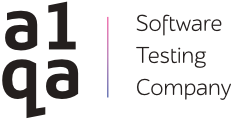
Location: Colorado, The United States
No of Employees: 700
Founded In: 2004
- A1qa is a software testing company that has its headquarters in Lakewood, Colorado. It has a strength of around 700 QA professionals, and it is been 16 years since a1qa has been providing software testing services.
- Their testing services include consulting, full-cycle testing, test automation, web app and, mobile app testing, pre-certification testing, and documentation services.
- Talking about the cost of services they provide; it entirely depends on services but on average, they charge you between 25$ – 49$ per hour.
- They are located at S. Wadsworth Blvd., Suite 485, Lakewood, Colorado 80235
- The United States and you can contact them at +17202075122.
3. Quality Logic

Location: West Emerald Street, Boise, ID 83704 USA
No of Employees: 51-200
Founded In: 1986
- Quality Logic is a QA company based on locations such as West Emerald Street Boise, 1st Street, Suite 103 Simi Valley, CA 93065, NW 64th Street, Suite 120 Oklahoma City, OK 73116 USA
- As their website says their testing services range from mobile apps to 3D printers
- They also possess a variety of testing tools that are customized for various specifications
4. ScienceSoft
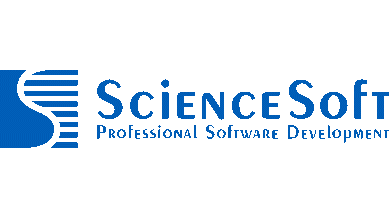
Location: Dallas area, TX, United States
No of Employees: 75
Founded In: 1990
- They are a renowned software testing company
- It is been 30 years since they have created their name in the USA for their testing services. In this span, they have completed around 500 projects.
- Their domain expertise lies in Retail, BFSI, HealthCare, telecommunications, and Entertainment. They help other companies to have correct testing practices and help them build a bug-free product.
- They have a team of 75 software testing professionals who have a forte in testing according to compliance: ISO 9001:2015.
5. DeviQA

Location: NYC, United States
No of Employees: 50 – 250
Founded In: 2010
- DeviQA has been offering testing services in the last 10 years in the USA. Always top number in the automation testing awards.
- They deal with a lot number of testing services such as Web/ Mobile, API, E2E, UAT, UI automation using top-notch tools, performance testing, stress testing, load testing, and QA consultancy.
- They have tested their hands in varied domains and some of their top domains are cybersecurity, education, travel, and BFSI.
- They believe in providing the top-level services, but customer’s data is secure which is their top priority.

6. Hidden Brains InfoTech

Location: Schaumburg, IL, United States
No of Employees: 50 – 250
Founded In: 2003
- Hidden Brains provides testing services to a lot of clients in the USA.
- Talking about their number of clients, they have around 2000 clients which are spread around 103 countries. They have been catering to the services in 100+ domains.
- Their professionals are top-notch software professionals who are well acquainted with the best software testing practice and methodologies.
- The company is Microsoft Certified Partner and has won various awards in the software testing industry.
7. BetterQA
Location: Random Lake, Wisconsin
No of Employees: 11-50
Founded In: 2002
- They have their headquarters at Ukraine
- Even if it is test automation practices or development, they believe in providing the best at a very rational cost.
- It is been 15 years since they are providing services to customers and customers are happy with the services.
8. BairesDev

Location: San Francisco, California
No of Employees: 1001-5000
Founded In: 2009
- It is one of the most dynamic and fast-growing IT companies in Latin America.
- They help in making a product from development to maintenance. Some of their well-known clients are Pinterest, Rolls-Royce, Motorola, and others.
- Their forte and expertise lie in Testing, renowned to follow all the well-known agile practices.
9. Testmatick

Location: New York, USA
No of Employees: 51 – 200
Founded In: 2009
- The company was founded in the year 2009 and has been headquartered in New York. It is one of the top testing service providers in New York.
- They have a strong team of testers who can start working on your project as soon as possible and can help you show the graphs where your product is lacking.
- Testmatick has a strength of around 200 members.
10. QASource

Location: CA, USA
No of Employees: 500-1000
Founded In: 2002
- QASource have around 17years of experience
- They charge you around 25$ – 49$ per hour with strength between 500 -1000.
- Their top clients are eBay, IBM, ORACLE, Facebook, prudential and others. You can visit their website qasource.com for more information.
11. Zymr Inc.

Location: California, USA
No of Employees: 50-249
Founded In: 2012
- Zymr is a full-stack service provider company providing various services ranging from development to maintenance.
- Around 1500 sprints have been successfully delivered by them.
- The company is known to provide services of software testing plus web and App Development, testing and upholding in the ground of Cloud and Cyber security and so on
12. QATestLab

Location: Kyiv, Ukraine
No of Employees: 50-249
Founded In: 2005
- QATestLab is a software testing service provider in the USA which has been providing its services since 2005.
- They have a team strength of 50-249 members. They serve various industries such as e-commerce, tourism, and other government projects.
- The company provides all kinds of testing services in the testing domain such as Mobile Testing, Functional Testing, Automated Testing, and Performance Testing.
- Loomia, BlazeMeter, imi, Freestyle Solutions, and PaperTrail are some of the top clients of QATestLab.

13. LambdaTest
![]()
Location: San Francisco, USA
No of Employees: 11-50
Founded In: 2017
- LambdaTest is a software testing company that has its headquarters in California, USA. It has a strength of around 250 QA professionals, and it is been 3 years since LambdaTest has been offering software testing services.
- They have around 2000 combinations of physical devices and browsers ready for testing.
- They offer you their selenium grid with which you can easily automate your automated tests in a parallel way.
14. Algoworks

Location: California, USA
No of Employees: 200-500
Founded In: 2006
- One of the top esteemed testing service providers in the USA. It is been operating its functions in The USA for 14 years. Algoworks provide various services such as salesforce development to testing.
- They specialize in salesforce testing. They have a strength of 1000 consultants which provides the best testing services to build the right product.
- They have been catering to 500 fortune companies such as Dell and Amazon for many years and in this span of a career.
- Architects of Algoworks will formulate the best strategy for you to test your software in a very rational cost.
15. Nexsoftsys
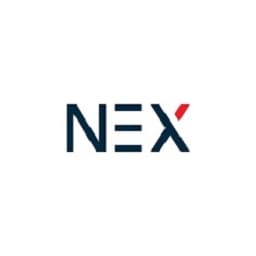
Location: NYC, USA
No of Employees: 50-249
Founded In: 2008
- Nexsoftsys is a technological partner which provide its testing services to various companies in the USA.
- They have expertise in various technologies such as Java, Golang, Python, Magenta, and Android.
- It is been 11 years since they have created their name in the USA for their testing services. In this span, they have completed around 500 projects.
- They have a team of 250 software testing professionals who have a forte in testing according to the best software testing practices.
16. Awsquality

Location: Ruston LA, USA
No of Employees: 11-50
Founded In: 2016
- Awsquality has been offering testing services in the last 6 years in the USA. Prominent in salesforce development and testing.
- They deal with a lot number of salesforce services such as Salesforce.com, Force.com, ERP, and others.
- They have tested their hands in varied domains and have delivered more than 150 projects so far.
- Awsquality believes in providing top-level services, and this is the reason they have been serving Fortune 100 companies so far.
17. Synergytop

Location: California, USA
No of Employees: 50-249
Founded In: 2014
- Synergytop provides testing services to a lot of clients in the USA. They provide extensive services such as the Design and Development of Web and mobile applications along with Quality analysis.
- Talking about their strength, they have around 250 professionals onboarded who provide the best services in the industry.
- They have been catering to the services since 2014. Their professionals are top-notch software professionals who are well acquainted with the best software testing practices and methodologies.
- They offer services in a very rational cost. They are located at 11832 Cypress Canyon Road, Suite 2, San Diego, California 92131 United States.
18. Abstracta

Location: California, USA
No of Employees: 50-249
Founded In: 2008
- Headquartered in California, USA. Abstracta is a renowned name
- They have been serving various domains such as BFSI, Retail, Healthcare, and Technology.
- It is been 12 years since they are providing services to customers and customers are happy with the services.
- Their main product is named GXTest which is extensively used for mobile testing..
19. Rademade

Location: Buenos Aires, Argentina
No of Employees: 50-250
Founded In: 2011
- It is one of the most dynamic and fast-growing IT companies in Ukraine. They have a team count of around 250 members.
- They help in making a product from development to maintenance. Some of their well-known clients into FinTech, BFSI, Healthcare and Blockchain domains. Their forte and expertise lie in Testing.
- They follow all the well-known agile practices. They are going to charge you between 25 – 49$ per hour depending upon the project.
20. Codebright
![]()
Location: Virginia, USA
No of Employees: 50-250
Founded In: 2015
- The company was founded in the year 2015 and has been headquartered in Virginia.
- They have a strong team of testers who can start working on your project as soon as possible and can help you show the graphs where your product is lacking.
- Software testing one of their service offering among others
21. Agile-infoways-PVT-ltd
![]()
Location: Dallas, USA
No of Employees: 700-1000
Founded In: 2006
- One of the top testing service providers in the USA for the last 13 years.
- They have delivered more than 2200 projects so far and have a very huge client base of 750 numbers.
- Their services include, mobile app development, digital marketing, e-commerce development
22. Systematix-infotech-PVT-ltd

Location: NC, USA
No of Employees: 50-249
Founded In: 2015
- Systematix is a CMMI Level 3 company which is ISO 9001: 2015 certified. It provides various services from AI, ML, RPA, Development, CRM, and Quality Assurance.
- They have been certified with various certifications such as Google Certified Partner, DataStax Partners, and Microsoft Gold Partner.
- They deal with various technologies such as JavaScript, Tableau, and Python. They have delivered around 2500 projects in much less duration.
23. Sunflower-lab
![]()
Location: Ohio, USA
No of Employees: 50-100
Founded In: 2010
- It is a software testing service provider in the USA which has been providing its services since 2010.
- They provide all kinds of testing services in the testing domain such as Mobile Testing, Functional Testing, Automated Testing, and Performance Testing.
- Sunflower Labs services include Custom Software Development, Web App Development, Mobile App Development, IoT App Development, Wearable App Development, Alexa Echo App Development, AR/VR App Development, and Strategic IT Consulting

24Blue-label-labs

Location: NYC, USA
No of Employees: 50-250
Founded In: 2008
- Blue-label-labs is a software testing company that has its headquarters in New York, USA. It has a strength of around 250 QA professionals, and it is been 11 years since it has been offering software testing services.
- Till now they have developed 250 applications so far. They provide services from development to post-launch maintenance.
Conclusion
We do know that there are many software testing companies in the USA. However, the names that we have mentioned in this blog are considered as some of the best and provide quality services in QA.

